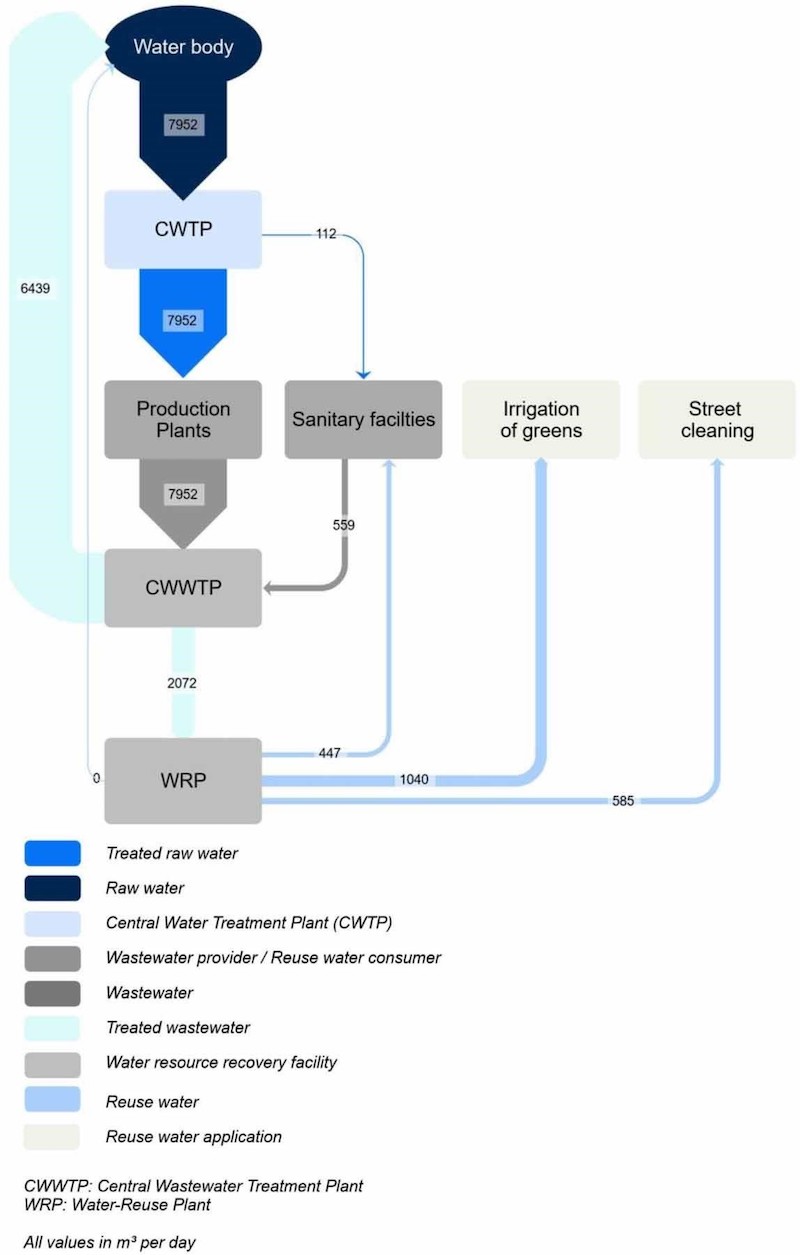Water model at industrial level - Increasing water-saving potentials

Wastewater from production plants is treated in a Central Wastewater Treatment Plant (CWWTP) and in an additional Water-Reuse Plant (WRP) within the industrial park. Accordingly, the industrial wastewater is clustered according to its loads and treated in different treatment tracks inside the CWWTP. After treatment in the CWWTP the wastewater is discharged either into the receiving water body or into the additional WRP. There, the water is further treated according to its subsequent use considering the respective water quality since the quality standards may vary from country to country. Therefore, the reuse water must be controlled at the outflow of the WRP to ensure that the reuse water quality is in compliance with the quality requirements of the respective reuse water application. The main idea is to reuse the treated wastewater for infrastructural purposes within the industrial park since large quantities of water are required for street cleaning, irrigation of green areas and toilet flushing. Remaining treated wastewater either being discharged into the water body or being reused for further water-reuse applications. To reach the required water quality, only one treatment technology of the WRP is necessary and sufficient. Therefore, the treated wastewater is filtrated by filters and disinfected by UV and chlorine dosing.